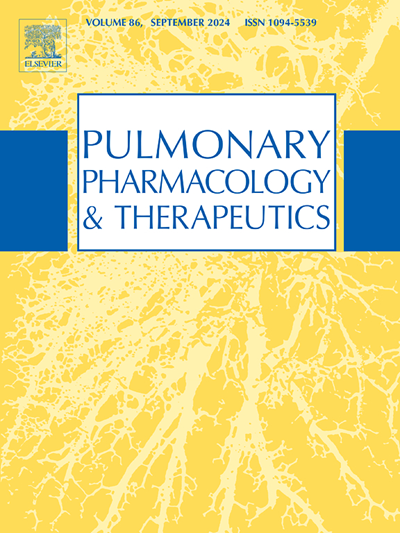使用FAERS数据对使用生物制剂治疗哮喘及相关疾病的患者中糖尿病的歧化分析
IF 2.8
3区 医学
Q2 PHARMACOLOGY & PHARMACY
引用次数: 0
摘要
治疗哮喘和相关疾病的生物制剂针对不同的免疫途径,但可能对葡萄糖代谢有不同的影响。越来越多的现实证据表明,有必要评估其与糖尿病(DM)和相关代谢不良事件(ae)的潜在关联。目的利用FDA不良事件报告系统(FAERS)的数据,评估6种批准用于哮喘及相关疾病的生物制剂相关的糖尿病和其他代谢不良事件的不成比例。方法计算omalizumab, mepolizumab, benralizumab, reslizumab, dupilumab和tezepelumab的代谢事件和DM的报告优势比(RORs),将药物特异性AE与FAERS背景进行比较。结果somalizumab (ROR: 6.10)和benralizumab (ROR: 4.88)在糖尿病ae方面表现出显著的歧化,mepolizumab也显示出升高的ROR(2.80)。对于代谢性不良反应,美泊珠单抗(ROR: 3.57)和奥玛珠单抗(ROR: 2.94)的信号最高。Dupilumab在糖尿病(0.10)和代谢ae(0.21)方面均显示最低的RORs。结论:基于faers的分析确定了几种用于治疗哮喘和相关疾病的生物制剂与糖尿病相关的潜在药物警戒信号,最明显的是omalizumab和benralizumab。在代谢性不良反应中也观察到类似的模式,这加强了对代谢性疾病患者或有代谢性疾病风险的患者进行上市后研究和临床意识的必要性。本文章由计算机程序翻译,如有差异,请以英文原文为准。
A disproportionality analysis of diabetes mellitus in patients treated with biologics for asthma and related conditions using FAERS data
Background
Biologics for asthma and related conditions target distinct immunologic pathways but may have differential effects on glucose metabolism. Emerging real-world evidence suggests a need to evaluate potential associations with diabetes mellitus (DM) and related metabolic adverse events (AEs).
Objective
To assess the disproportionality of DM and other metabolic AEs associated with six biologics approved for asthma and related conditions using data from the FDA Adverse Event Reporting System (FAERS).
Methods
Reported odds ratios (RORs) were calculated for metabolic events and DM for omalizumab, mepolizumab, benralizumab, reslizumab, dupilumab, and tezepelumab, comparing drug-specific AE profiles against the FAERS background.
Results
Omalizumab (ROR: 6.10) and benralizumab (ROR: 4.88) exhibited significant disproportionality regarding diabetes AEs, with mepolizumab also demonstrating an elevated ROR (2.80). For metabolic AEs, mepolizumab (ROR: 3.57) and omalizumab (ROR: 2.94) had the highest signals. Dupilumab showed the lowest RORs for both diabetes (0.10) and metabolic AEs (0.21).
Conclusion
This FAERS-based analysis identified a potential pharmacovigilance signal for DM associated with several biologics used to treat asthma and related conditions, most notably omalizumab and benralizumab. Similar patterns were observed for metabolic AEs, which reinforces the need for post-marketing studies and clinical awareness in patients with or at risk for metabolic disorders.
求助全文
通过发布文献求助,成功后即可免费获取论文全文。
去求助
来源期刊
CiteScore
6.20
自引率
0.00%
发文量
41
审稿时长
42 days
期刊介绍:
Pulmonary Pharmacology and Therapeutics (formerly Pulmonary Pharmacology) is concerned with lung pharmacology from molecular to clinical aspects. The subject matter encompasses the major diseases of the lung including asthma, cystic fibrosis, pulmonary circulation, ARDS, carcinoma, bronchitis, emphysema and drug delivery. Laboratory and clinical research on man and animals will be considered including studies related to chemotherapy of cancer, tuberculosis and infection. In addition to original research papers the journal will include review articles and book reviews.
Research Areas Include:
• All major diseases of the lung
• Physiology
• Pathology
• Drug delivery
• Metabolism
• Pulmonary Toxicology.

 求助内容:
求助内容: 应助结果提醒方式:
应助结果提醒方式:


